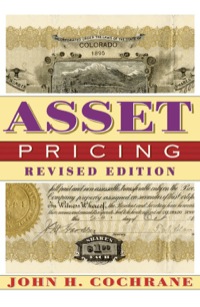Answered step by step
Verified Expert Solution
Question
1 Approved Answer
The previous section discussed calculating descriptive statistics using ex post (historical) data. This method is effective for describing past events. In addition, you can use
 The previous section discussed calculating descriptive statistics using "ex post" (historical) data. This method is effective for describing past events. In addition, you can use historical results to characterize future events-that is, if you can reasonably assume that future events will resemble past events. However, if a reliable probability distribution is available, you can calculate expected descriptive statistics (also called "ex ante" statistics). The probability distribution describes all the possible outcomes a variable can assume. Using probability data, you can calculate the expected mean, variance, and standard deviation using the following formulas: 2=i=1npixi=i=1npi(xi)2=2 A probability distribution for five possible market conditions is shown below, along with the expected demand in each state. Calculate the expected value (mean) and standard deviation of demand. If you ignored the probability weights and assumed the market conditions were equally probable, the mean demand would be 35,000 units and the standard deviation would be 25,100 units. Using the probability weights, calculate the following statistics: Expected mean = Standard deviation =
The previous section discussed calculating descriptive statistics using "ex post" (historical) data. This method is effective for describing past events. In addition, you can use historical results to characterize future events-that is, if you can reasonably assume that future events will resemble past events. However, if a reliable probability distribution is available, you can calculate expected descriptive statistics (also called "ex ante" statistics). The probability distribution describes all the possible outcomes a variable can assume. Using probability data, you can calculate the expected mean, variance, and standard deviation using the following formulas: 2=i=1npixi=i=1npi(xi)2=2 A probability distribution for five possible market conditions is shown below, along with the expected demand in each state. Calculate the expected value (mean) and standard deviation of demand. If you ignored the probability weights and assumed the market conditions were equally probable, the mean demand would be 35,000 units and the standard deviation would be 25,100 units. Using the probability weights, calculate the following statistics: Expected mean = Standard deviation = Step by Step Solution
There are 3 Steps involved in it
Step: 1

Get Instant Access to Expert-Tailored Solutions
See step-by-step solutions with expert insights and AI powered tools for academic success
Step: 2

Step: 3

Ace Your Homework with AI
Get the answers you need in no time with our AI-driven, step-by-step assistance
Get Started


